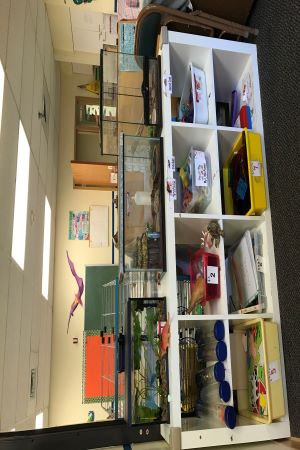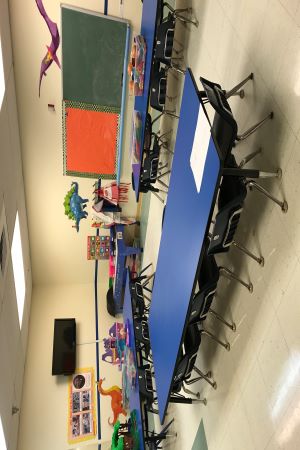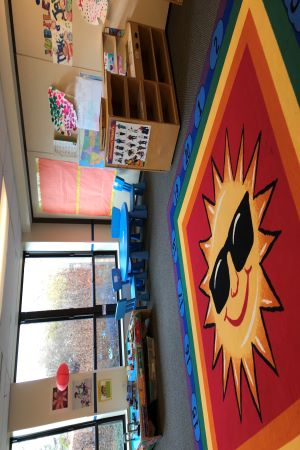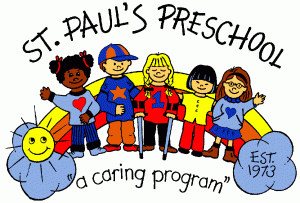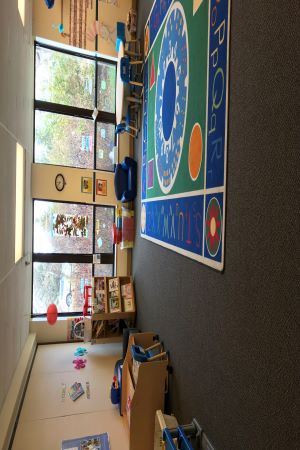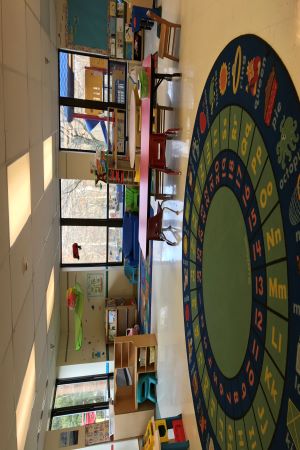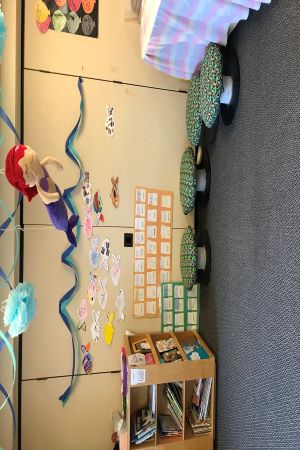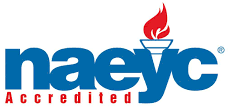Frequently Asked Questions (FAQs)
Please send your questions to the director at:
Question: Why do some children know the alphabet already and mine does not?
Answer: This is an important question. Child development is a process every child goes through during predictable time periods. Children develop skills in five main areas: Cognitive (ability to learn and solve problems), Social-Emotional (ability to interact with others and self-control), Speech and Language (ability to both understand and use language), Fine-Motor (ability to use small muscles) and Gross-Motor (ability to use large muscles). A developmental milestone is a skill that a child acquires within a specific time frame. These milestones develop in a sequential fashion, which means that a child will need to develop some skills before he or she can develop new skills. Each milestone builds on the last milestone developed.
Each child is an individual and may meet developmental milestones a little earlier or later than his/her peers. Not everyone walked before they were 10 months and not everyone spoke before the age of two! This is because each child is unique and will develop at his or her own pace.
As parents, we all want our children to succeed and be the best they can be. We know from research that two factors influence how your child succeeds and grows: genes and environment.
One of the factors that influence a child’s development is their genetic makeup or “genes”. Some people refer to this as “nature.” Genes are the genetic materials we pass onto our children. Children are born with their “genes” in place. These genes act like a blueprint for what characteristics a child may have.
The other factor that influences child development is the environment. This includes experiences children have in their home, school and community environments. Some people refer to this as “nurture.”
We often think we need to run out and buy special toys, music and games to stimulate our child’s development, but we have to remind ourselves that it is more important to provide the following everyday activities you can do with your child to encourage brain development.
- Give your child lots of love and attention
- Interact with your child by talking, singing, playing, eating and reading with him/her
- READ, READ, READ! Research has shown that children who are read to by their parents have a larger vocabulary than other children.
Please read the following question for more information about what skills a child needs first, to build upon, before learning the alphabet. Once your child’s brain is ready to make the crucial connections it needs to be able to “see” the shapes of the letters and “hear” the sounds, your child will be able to discriminate the various letters and learning the alphabet will be easy.
Question: What can I do to teach my child his alphabet? He doesn’t seem interested.
Answer: This question is related to the previous one. There are, in fact, a few steps you can introduce to your child before and during the more formal instruction of “teaching the alphabet letters.” You are most likely teaching these steps without even realizing it! It is a good idea to be aware of them to help give structure to your play times together so you will instinctively know when it is the right time to move onto the next level. This “pre-reading” time is often referred to as Phonemic Awareness.
- There are many activities you can introduce to hone your child’s ability to isolate sounds they hear on a daily basis. The skill of listening is required for children to be better able to recognize sound (phonemes) in words that they will be introduced to in the months ahead. Look out for listening games in educational toy stores. Reading rhymes and poems also encourages listening.
- Rhyming and Alliteration. As adults we recognize when words like /gate/, /eight/, and /late/ rhyme. However, for a child this skill has to be practiced and practiced before it becomes a natural process. Nursery rhymes and poems are an excellent way to introduce rhyming and alliteration. Alliteration is the repetition of the first letter sound in a phrase…six slimy shy snakes!
- Comparing and contrasting sounds of rhyme. A child learns to spot the “odd sound out”. This is an important step that is often overlooked. By encouraging children to compare and spot the odd one out you are helping them fine tune their listening skills for later on when they will need to recognize patterns and phonemes in words.
- Awareness of syllables. After a child becomes aware of words, the next step is the awareness that words are divided into parts of beats we call syllables. An awareness of syllables will enable your child to perform phonemic segmentation (counting out the number of phonemes in a word). One easy game to play is to clap and count the syllables in their own name or other family and friends names.
- Phoneme recognition. This refers to an awareness that the words we are saying are made up of small sounds. After listening to all those nursery rhymes and poems your child will quickly begin to pick out the more obscure sounds and patterns in words they are hearing.
- Phoneme spelling. This involves becoming so familiar with phonemes (sounds) that a child will be able to manipulate words by adding and deleting phonemes at the beginning, middle and end of words to make new sounds.
Being able to hear the sounds in words will make it easier to connect to the written symbol. Help your child practice making circles and lines (the shapes needed to create the letters) and encourage your child’s interest in “writing” by having a box at home filled with paper, pencils and/or markers, envelopes, stamps, rulers, alphabet cards with pictures, and stickers. When your child is developmentally ready to connect the sounds and shapes to the letters, then learning the alphabet will be easy and fun!
QUESTION: How do you practice fire drills with the children? My son is scared of loud noises.
ANSWER: This is an important question. Each class practices a fire drill once per month. We begin by introducing the children to fire safety practices with learning center activities (all classes work on a fire safety unit). Children learn how to Stop, Drop, and Roll and how to set up an evacuation plan for their homes. Often, we have a fire fighter visit the school to talk about what he/she does and to show the children his/her equipment, as well as the fire truck.
The teachers read books and fire evacuation routes from the classroom to a “safe” spot in the parking lot are plotted. The teachers discuss the sound of the bell they will ring when a practice fire drill is begun. They also show the children the light in the classroom that will flash when the church enacts a building fire drill. They explain to the children that there will be a loud bleating sound when the light flashes and that means that we need to walk outside to our “safe” spot as fast as we can. If children are scared of loud noises, the teachers will take their hand and walk with them as they reassure them.
A building fire drill is done four times per year so that the children are familiar with the flashing light and the bleating sound the alarm makes. Each regular classroom fire drill is practiced with the hypothetical “fire” in a different area of the building each time so that the children are familiar with the various escape routes. Each classroom door has the evacuation routes posted beside it, detailing the escape route as well as the alternate escape route.
A teacher will ring the bell. Children are taught to drop what they are doing and line up by the door. Teachers guide the children out of the building as fast as possible, taking them to the designated safe place. School administrators and church employees search the building for anyone left inside. Teachers take the emergency forms for each child, a cell phone, any medication children may need and the class attendance book so that they can make sure everyone is safely outside the building. No one stops for book bags or coats. The teachers assure the children that these things can be purchased again, but that children can never be replaced. Once all the children have been accounted for, the administration will motion to the teachers that they can re-enter the building. The children go back to the areas they were in before the fire drill and continue with their day. They are always congratulated and praised for completing the fire drill successfully.
It is important to know that the staff has updated Fire Safety training each year (annually). This training is done by a certified fire protection professional (often the township Fire Marshall). This training includes the maintenance of smoke detectors, the duties of facility persons during a fire drill and during a fire and the use of the facility’s fire extinguishers.
QUESTION: I like that children have a snack at school and that you encourage healthy snacks. What is the importance of drinking water for snack instead of a fruit juice?
ANSWER: Excellent questions. Water is an important nutrient for healthy brain development in children. Water is always served with the children’s snack because it is important for children for many reasons:
- It helps maintain the body’s total fluid level which helps cushion the organs
- It helps maintain blood pressure
- It helps with the body’s metabolism and kidney filtration (flushes out the toxins in our systems)
- It helps hydrate the child after exercise or large motor/movement activities
- It helps prevent cognitive impairments, confusion, irritability and lethargy (for better school performance)
According to a study published in Archives of Diseases in Childhood, more than 70% of preschool children never drink plain water. They tend to be consuming drinks made with sugar, fruit juice, acids, or sugar substitutes. Although these drinks have water in them, they also dehydrate a child’s body because their bodies need water to process these sugary drinks. Many experts also believe that sugary drinks (including fruit juices) are a major contributor to childhood obesity. So, drink water!!
QUESTION: My son started speech therapy in the summer. I understand that this therapy continues into the classroom. How does this function fit within the class activities?
ANSWER: This is a great question and one that is asked often by parents with children who are serviced by speech and language therapists within the classroom. The classroom is an ideal environment for language and speech development and refinement. Children are in groups during the day and are encouraged to interact with each other during play and center times. Teachers and therapists act as role models as they speak with the children and with each other. The daily lesson plans reflect specific learning goals and implement the developmentally appropriate curriculum for each age group. Therapists are given the monthly plans as well as daily plans so that they can incorporate their IEP or speech/language goals into the classroom activities. There is an even flow with the goals and methods of skills acquisition that the therapists use with the daily lessons the teachers are presenting. In other words, children are NOT removed from the classroom for speech practice. This is done in a natural manner within the typical classroom day with the other children. Therapists will have discussions with the classroom teachers which highlight what skills were worked on during the visit, what skills can be done at home and at school, and techniques and strategies which can be used to help the children acquire the speech sounds that they are working on in therapy. This team approach is holistic and is beneficial to all involved.
QUESTION: I notice that the class sizes seem large. Is this something I should worry about? Will my child get the attention and education he needs in this type of large class?
ANSWER: This is a good question and one that I often hear from parents unfamiliar with our program. As a state licensed, Star FOUR and NAEYC accredited program, we MUST adhere to the strict staff: child ratios within the classroom. The staff: child ratios are:
- Older Toddler (a child 2-3 years of age) 1:6
- Preschool (children ages 3 to date starting Kindergarten) 1:10
We can have up to 15 children in the Lavender Class (2 Day/2 year olds) with 3 staff. Ratio is 1:5
We can have up to 21 children in the Turquoise Class (3 Day/3year olds) with 3 staff. Ratio is 1:7
We can have up to 21 children in the Red and Green classes (2 Day/3 year olds) with 3 staff. Ratio is 1:7
We can have up to 24 children in the Orange, Yellow and Blue classes (3 Day/4 year olds) with 3 staff. Ratio is 1:8
We can have up to 24 children in the Purple and Gold classes (4 Day/5 year olds) with 3 staff. Ratio is 1:8
As you can see, we are below the required staff: child ratio.
At this time, due to COVID-19 regulations, children will be in small groups with the same staff member for the entire classroom period. Each room will be separated by a solid wall.
When we are back to functioning in a regular manner, the children will be together in a large group at the beginning of the day when they are all arriving, for our beginning of the day circle time, for snack and for the ending day circle and dismissal time. For the majority of the day, the children are still split into the smaller groups (3 groups per class). This enables the children to have plenty of one-on-one time with each teacher as they are learning specific skills.
QUESTION: Are any of the teachers trained in first aid or CPR? Who takes care of my child if she has an accident?
ANSWER: Another great question! All of the St. Paul’s teaching staff as well as the director are trained in pediatric first aid and CPR. They are also trained in how to use an AED (defibrillator) and Epi-pens (for allergies). This is a requirement for employment and the certificates must be current. They are renewed every two years. All staff knows how to treat childhood injuries and illnesses. The emergency procedures we follow are listed in your parent handbook on pages 12 and 13. The handbook is available in the parent section on this website.
Staff members have also received training in COVID-19 symptoms, infection control, workplace disinfection and preventative measures including practices and procedures.
